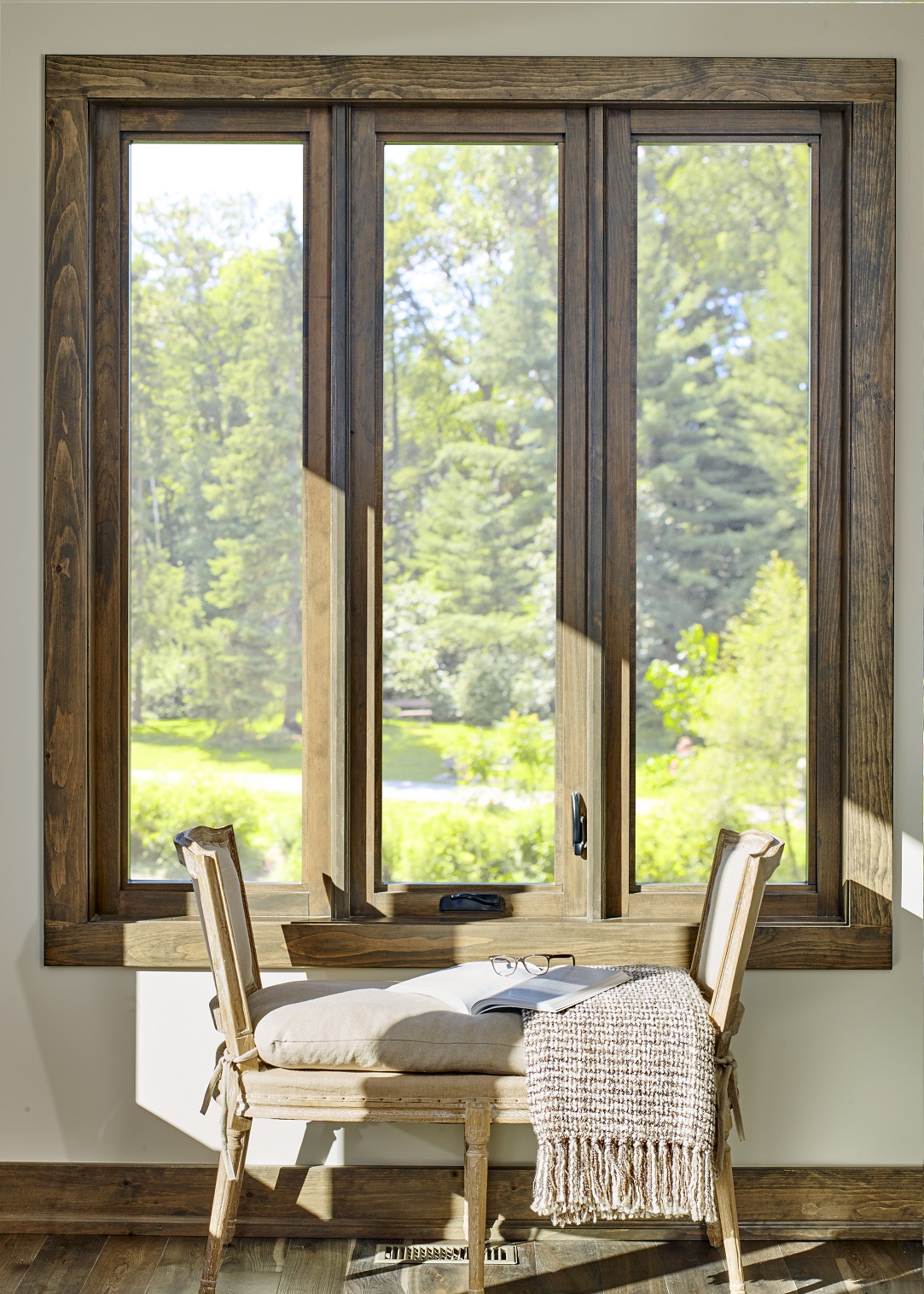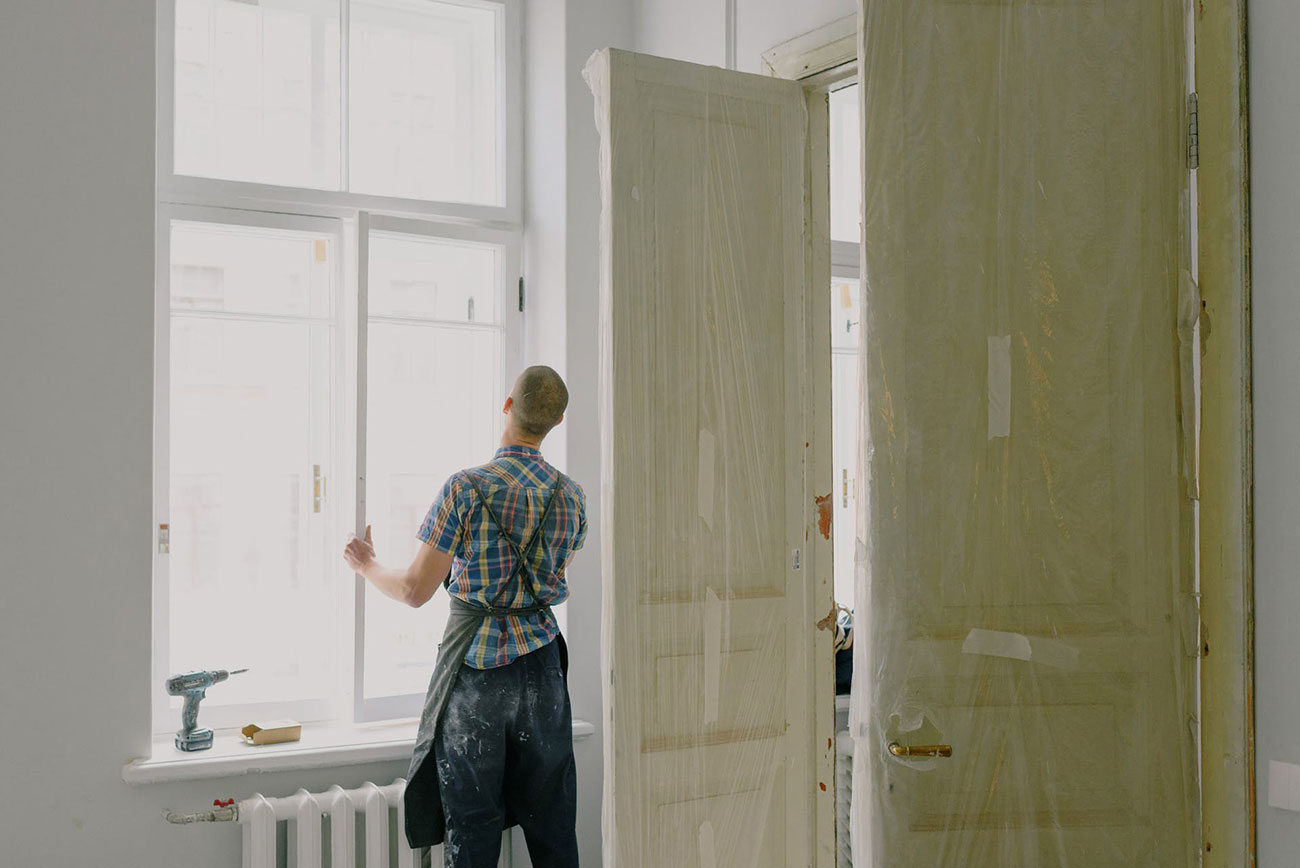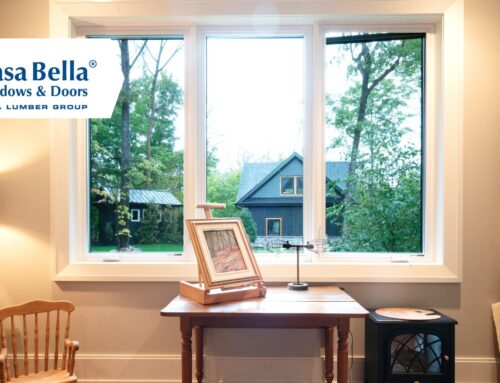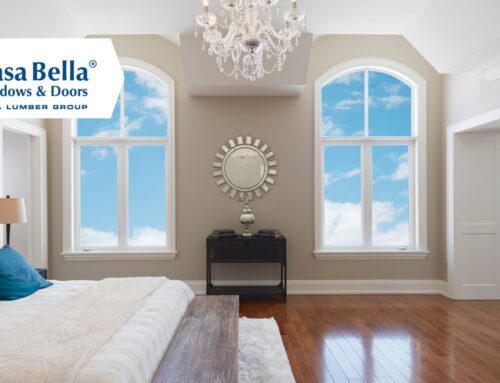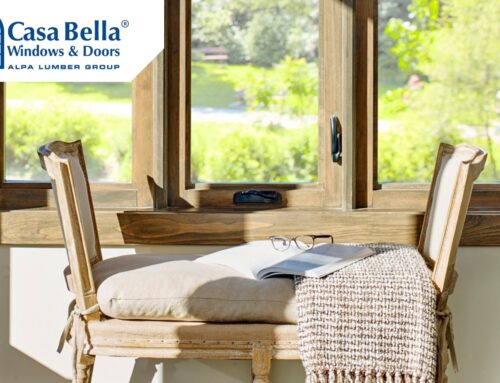Windows play a pivotal role in our homes, offering much more than just a view of the outside world. They are vital components of a well-designed living space, influencing both aesthetics and functionality. One critical aspect of windows that often goes overlooked is the choice of window frame materials. The type of material used for window frames can impact a home’s energy efficiency, maintenance requirements, and overall look and feel.
As one of the GTA’s leading local window suppliers, here are our thoughts on common materials window frames are made of.
Types of Window Frame Materials
There are several options available with window frame materials, each with its own set of characteristics, advantages, and disadvantages. Four popular types of window frame materials, wood, vinyl, aluminum, and fibreglass, are explored below:
Wood Window Frames
Wood has been a traditional choice for window frames for a long time. It offers a classic and natural look that many homeowners find appealing. Wood frames are known for their insulating properties, helping to keep your home comfortable in different seasons. They can also be customized to match your home’s aesthetic.
However, wood frames must be painted and sealed with a protective coating and require regular maintenance to protect them from moisture, pests, and rot. If not properly cared for, they can deteriorate over time, which can be a drawback for some homeowners. Additionally, wood frames tend to be more expensive than some other materials while not lasting nearly as long.
Aluminum Window Frames
Aluminum window frames are lightweight and strong, making them a suitable choice for larger window openings. Aluminum frames are known for their slim profiles, which allow for larger glass areas and more natural light.
While aluminum frames are durable, they are not as energy-efficient as some other materials. Aluminum is a good conductor of heat, which can result in heat loss during cold seasons and heat gain during hot seasons. Thermal breaks can be added to aluminum frames to improve energy efficiency, but this may increase the cost.
Vinyl Window Frames
Vinyl window frames have gained popularity in recent years due to their affordability and low maintenance requirements. These frames are made from a plastic-like material called polyvinyl chloride (PVC). They are known for their durability and resistance to moisture, which makes them a suitable choice for various climates.
Vinyl frames are also energy-efficient, helping to reduce heat transfer and improve insulation. However, the look may not always offer the same warmth as wood frames. This is why cutting-edge window frame materials, like the hybrid wood-vinyl options available at Casa Bella, have become all the rage with interior design professionals.
Fiberglass Window Frames
Fibreglass window frames are made from glass fibres embedded in a resin matrix. They are known for their strength and durability. Fiberglass frames are highly resistant to weather, cracking, and warping, making them a low-maintenance option for homeowners. Also similar to vinyl window frames, they can be customized into infinite shapes and sizes, e.g., awning window frames.
One of the key advantages of fibreglass frames is their energy efficiency. They have excellent thermal performance, helping to keep your home comfortable and reduce energy costs. Fiberglass frames can also be painted, allowing for customization to match your home’s exterior.
However, fibreglass frames can be more expensive than vinyl and may not offer as many design options (i.e., are not as customizable) as wood.
Factors to Consider When Choosing Window Frame Materials
When selecting window frame materials for your home, there are several critical factors that should guide your decision. These factors have a significant impact on your choice, and understanding how each material aligns with your priorities is essential. Let’s look into these key considerations:
1. Energy Efficiency
Different window frame materials offer varying levels of insulation and thermal performance. This directly affects the energy efficiency and energy costs of your home. You must consider how well a frame material can prevent heat transfer, like frames for casement windows, which is crucial for maintaining a comfortable and affordable indoor environment. Additionally, it’s important to take into account your local climate and the heating and cooling needs of your home to make an informed choice.
2. Maintenance and Durability
Window frame materials have varying long-term care and upkeep requirements. Some materials are more prone to wear and damage from moisture or rot over time. Understanding these maintenance needs is crucial to ensuring the longevity and performance of your windows. You should also evaluate how much time and effort you’re willing to invest in maintenance when making your decision.
3. Cost
The cost of window frame materials can vary significantly, and it’s not limited to the initial purchase price. Beyond the immediate expense, you should consider long-term savings and potential replacement costs associated with each material. Remember that windows have a considerable impact not just on energy cost savings, but also on the resale value of your home.
4. Style and Aesthetics
Your choice of window frame material can have a noticeable impact on the overall appearance of your home. It’s essential to think about how well the selected frame material complements your home’s design and aesthetic. Additionally, you should consider whether the material provides the level of customization options you desire to achieve your desired look.
It’s important to remember that the choice of window frame material is not a one-size-fits-all decision. What may work exceptionally well for one homeowner might not be the ideal choice for another. Therefore, it’s imperative to evaluate these factors thoughtfully, ensuring that your choice aligns with your specific needs, priorities, and budget constraints.
Environmental Considerations
When selecting window frame materials, it’s also essential to consider their environmental impact. The choice you make can affect sustainability, recyclability, and the overall carbon footprint of your home. Here are two key environmental considerations:
Sustainability
Sustainability encompasses the long-term environmental effects of the materials you choose for your window frames. Some materials, such as wood sourced from sustainably managed forests, have a lower environmental impact. It’s worth contemplating whether the material aligns with your personal environmental values and goals.
Longevity and Waste
The lifespan of your window frames plays a vital role in determining the amount of waste generated. Materials that are highly durable often lead to fewer replacements over time, resulting in reduced waste. Consider how the longevity of your chosen material can contribute to minimizing environmental impact by decreasing waste production.
By taking these environmental considerations into account, you can make a well-informed decision that not only satisfies your practical requirements but also aligns with your commitment to reducing your ecological footprint. It’s important to note that there are several eco-friendly options available, allowing you to strike a balance between functionality and sustainability.
This Post in a Nutshell
Summarizing, each type of window frame material has its own set of characteristics and considerations. Wood frames offer a classic look but require regular maintenance. Vinyl frames are affordable and low-maintenance but may have a less appealing appearance to some. Aluminum frames are strong and lightweight but may not be the most energy-efficient choice. Fiberglass frames are durable and highly energy-efficient but can be pricier and less widely available. When choosing the right window frame material for your home, it’s essential to consider your priorities and budget.

